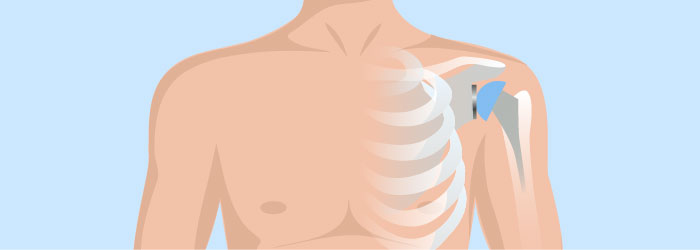Shoulder Replacement: How Can We Speed Up Recovery?

According to the American Journal of Sports Medicine, 89% of shoulder replacement patients return to their desired activities in 3-6 months. I strongly feel that today’s baby boomer patients, who are striving to maximize even an above-the-norm recovery, require a more advanced way to rehabilitate the shoulder arthroplasty.
Pre-Operative Impairments
I believe that we must approach shoulder replacement rehabilitation with a mindset that the patient had a long period of pain and disuse pre-operatively. Therefore, addressing the pre-operative impairments is our first and foremost goal. These pre-operative impairments can be improved with manual therapy of the periscapular muscles, better posture and thoracic alignment. Once these impairments are out of the way, it will allow for a much more efficient facilitation of the phases of rehab that strengthen the shoulder.
Shoulder arthroplasty rehabilitation requires attention to the entire kinetic chain. From the acute stage through home care, the clinician needs to prepare the patient for outpatient rehab. The first 21 days should focus on preoperative impairments of posture, scapular mobility, and restrictors to shoulder elevation. This will be the bridge to recovering the ADL, and eventually functional strength.
Shoulder Hike or Shrug
One of the key rehabilitation goals to return patients to their desired activity is to eliminate and prevent the dreaded “shoulder hike or shrug” following shoulder replacement. We can do a better job of addressing this concern and it should be every clinician’s goal when rehabbing a shoulder patient.
The biomechanical reason for the dreaded shoulder hike or shrug is that most shoulder replacement patients have pre-operative rotator cuff weakness or pathology. If the rotator cuff cannot adequately compress the head of the humerus into the glenoid fossa, the force couple will be absent between the rotator cuff and the deltoid, meaning the head of the humerus will go into a superior direction versus a posterior inferior direction. The exercises using a short lever deltoid action can result in making the deltoid a two-action muscle (performing both humeral head compression and elevation), thus addressing the “shoulder hike or shrug”!

